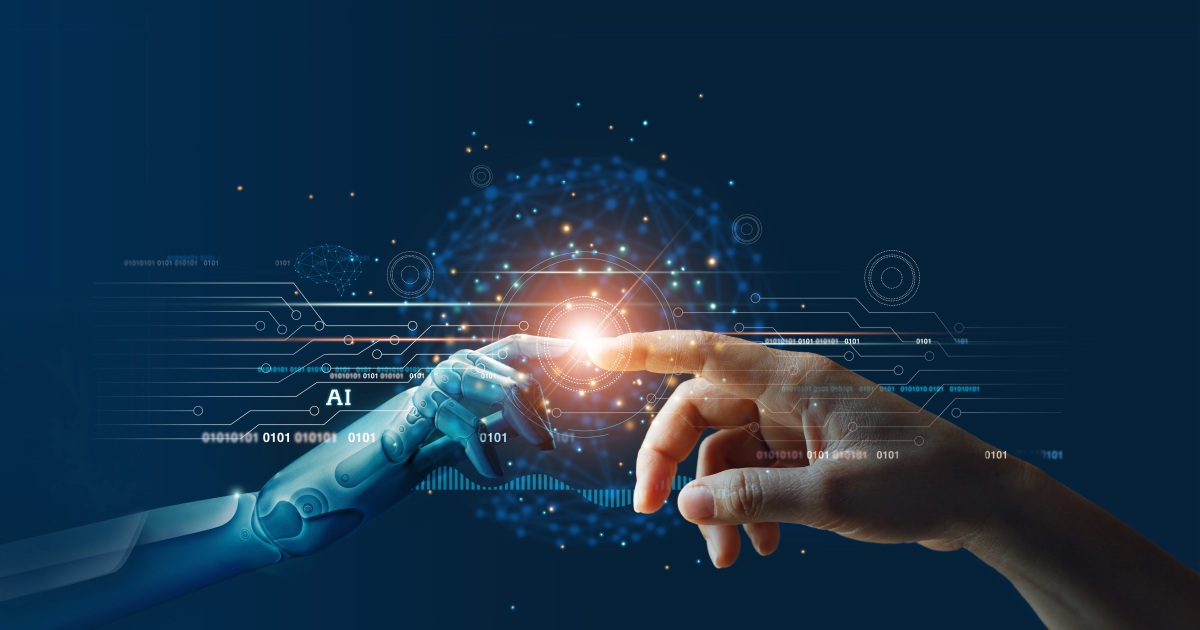From SIRI to self-driving cars, artificial intelligence (AI) is progressing rapidly. While sciencefiction often portrays AI as robots with human-like characteristics, AI can encompass anything from Google’s search algorithms to IBM’s Watson to autonomous weapons.
The Definition of AI
Back in the 1950s, the fathers of the field, Minsky and McCarthy, described artificial intelligence as any task performed by a machine that would have previously been considered to require human intelligence.
Well, this definition is vague.
Modern definitions of what it means to create intelligence are more specific. Francois Chollet, an AI researcher at Google and creator of the machine-learning software library Keras, has said
intelligence is tied to a system’s ability to adapt and improvise in a new environment, to generalise its knowledge and apply it to unfamiliar scenarios.
“Intelligence is the efficiency with which you acquire new skills at tasks you didn’t previously
prepare for,”
Artificial intelligence today is properly known as narrow AI (or weak AI), in that it is designed to perform a narrow task (e.g. only facial recognition or only internet searches or only driving a car). However, the long-term goal of many researchers is to create general AI (AGI or strong AI). While narrow AI may outperform humans at whatever its specific task is, like playing chess or solving equations, AGI would outperform humans at nearly every cognitive task.
What are the uses for AI?
AI is ubiquitous today, used to recommend what you should buy next online or what you should eat for dinner, to understand what you say to virtual assistants, such as Amazon’s Alexa and Apple’s Siri, to recognize who and what is in a photo, spot spam, or spot spam detect credit card fraud.
What are the different types of AI?
At a very high level, artificial intelligence can be split into two broad types:
Narrow AI
Narrow AI is what we see all around us in computers today — intelligent systems that have been taught or have learned how to carry out specific tasks without being explicitly programmed how
to do so.
This type of machine intelligence is evident in the speech and language recognition of the Siri virtual assistant on the Apple iPhone, in the vision-recognition systems on self-driving cars, or in the recommendation engines that suggest products you might like based on what you bought in the past. Unlike humans, these systems can only learn or be taught how to do defined tasks, which is why they are called narrow AI.
General AI
General AI is very different and is the type of adaptable intellect found in humans, a flexible form of intelligence capable of learning how to carry out vastly different tasks, anything from haircutting to building spreadsheets or reasoning about a wide variety of topics based on its accumulated experience.
What are recent landmarks in the development of AI?
While modern narrow AI may be limited to performing specific tasks, within their specialisms, these systems are sometimes capable of superhuman performance, in some instances even demonstrating superior creativity, a trait often held up as intrinsically human.
There have been too many breakthroughs to put together a definitive list, but some highlights include:
In 2009 Google showed its self-driving Toyota Prius could complete more than 10 journeys of100 miles each, setting society on a path towards driverless vehicles.
In 2011, the computer system IBM Watson made headlines worldwide when it won the US quiz show Jeopardy!, beating two of the best players the show had ever produced. To win the show,
Watson used natural language processing and analytics on vast repositories of data that is processed to answer human-posed questions, often in a fraction of a second.
In 2012, another breakthrough heralded AI’s potential to tackle a multitude of new tasks previously thought of as too complex for any machine. That year, the AlexNet system decisively triumphed in the ImageNet Large Scale Visual Recognition Challenge. AlexNet’s accuracy was such that it halved the error rate compared to rival systems in the image-recognition contest.
2020 was the year in which an AI system seemingly gained the ability to write and talk like a human about almost any topic you could think of.
The system in question, known as Generative Pre-trained Transformer 3 or GPT-3 for short, is a neural network trained on billions of English language articles available on the open web.
Here are some benefits of AI:
AI facilitates the creation of a next-generation workplace that thrives on seamless collaboration between enterprise systems and individuals. Therefore, human resources are not made obsolete, but rather, their efforts are bolstered by emerging tech. In fact, AI provides organisations with the luxury of freeing up resources for higher-level tasks.
The following are the primary advantages of AI:
AI drives down the time taken to perform a task. It enables multi-tasking and eases the workload for existing resources.
AI enables the execution of hitherto complex tasks without significant cost outlays.
AI operates 24×7 without interruption or breaks and has no downtime
AI augments the capabilities of differently-abled individuals
AI has mass-market potential, it can be deployed across industries.
AI facilitates decision-making by making the process faster and smarter.
How can AI be Dangerous?
Most researchers agree that a super intelligent AI is unlikely to exhibit human emotions like love or hate and that there is no reason to expect AI to become intentionally benevolent or malevolent. Instead, when considering how AI might become a risk, experts think two scenarios most likely:
The AI is programmed to do something devastating: Autonomous weapons are artificial intelligence systems that are programmed to kill. In the hands of the wrong person, these weapons could easily cause mass casualties. Moreover, an AI arms race could inadvertently
lead to an AI war that also results in mass casualties. To avoid being thwarted by the enemy, these weapons would be designed to be extremely difficult to simply “turn off,” so humans could plausibly lose control of such a situation. This risk is one that’s present even with narrow AI but grows as levels of AI intelligence and autonomy increase.
The AI is programmed to do something beneficial, but it develops a destructive method for achieving its goal: This can happen whenever we fail to fully align the AI’s goals with ours, which is strikingly difficult. If you ask an obedient intelligent car to take you to the airport as fast as possible, it might get you there chased by helicopters and covered in vomit, doing not what you wanted but literally what you asked for. If a super intelligent system is tasked with an ambitious geoengineering project, it might wreak havoc with our ecosystem as a side effect, and view human attempts to stop it as a threat to be met.
Are we ready for AI in Africa, Particularly East Africa?
Well, the question is not whether we are ready or not, because AI systems are already amongst us, on all devices that we use smartphones to self-driving cars Tesla. The Big question should be; Are we aware of it? Can we use it and captivate its mass benefits?
With AI & Machine Learning we can revolutionize industries once used effectively.
The concept of AI is vague, one can write a whole book just dedicated to the true definition of AI. In case you want to learn more about AI then drop a comment or email us;
Learn more about AI systems from credible sources;
https://ai.google/
https://www.apple.com/siri/
https://www.tesla.com/autopilot
https://developer.amazon.com/en-US/alexa



